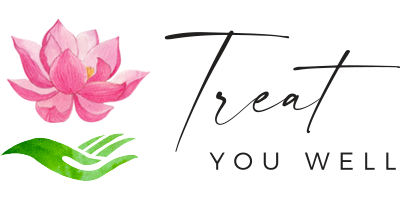Lower Back Cross Syndrome
What is Lordosis?
Lordosis refers to your natural lordotic curve, which is normal. But if your curve arches too far inward, it’s called lordosis, or swayback. Lordosis can affect your lower back and neck. This can lead to excess pressure on the spine, causing pain and discomfort. It can affect your ability to move if it’s severe and left untreated.
Lordosis commonly causes Lower Back Cross Syndrome due to pelvic rotates anteriorly that will cause
Tight Erector Spinae
Weak Glutues Maximus
Tight Illopsoas (major leg flexor which is associated with Quadriceps) - the reason of the cause because the pelvic forces to rotate anteriorly pulling the Illopsoas (attached inside of lumbar spines) down and compressed the Quad and shorten its muscles. At the same time weak Hamstring is unable to hold the pelvic in place then it becomes overstretched.
Weak Abdominal muscles
Because of all of the above happenings, lower back pain easily to develop through postural dysfunction for a long period of time. Shifting the muscle & joints and causing imbalance forces of pulling or compressing. Situation will get worse through time and with age. Most common pain symptom may experience for women with figure 8 body shape (swayback) , people with rounded glutes (buttocks) and pelvic anterior tilted. It could happen to any age as well as overweighted people.
For maintenance, it is better to strengthen the muscles in the weak area for front and back, like lumbar and abdominal. When the muscles are getting stronger that they can better hold the spine in place then to lessen the compression of the spine that possibly cause pain. Stretching the tight muscles (Erector Spinae and Illopsoas or Quads) are also essential.
Start with back extensions
Doing back extensions while leaning face-down on an exercise ball targets the thick paraspinal muscles of your low back while simultaneously giving a little stretch to your abdominal muscles in the front of your torso. In a way, it's like doing a "reverse sit-up." Weak and strained paraspinal muscles are a common cause of low back pain, so strengthening them on an exercise ball makes sense. Do 3 sets of 10 repetitions with 1 minute rest in between, assuming that you don't feel sharp pain when you extend your spine — if you do feel pain, then see a healthcare professional first.
Lay with your stomach on the exercise ball with your legs outstretched, using your feet/toes for stability (wearing rubber-soled shoes is a good idea). You can also try placing your feet along the bottom of a wall.
Then place your hands behind your head and slowly lift your upper abdominals and chest off the ball, arching your back in the process. Try to focus on contracting the muscles of your low back. Hold for a few seconds while in an extended position and then slowly lower your torso back down to the ball.
Try squeezing your shoulder blades together to engage your upper back muscles.
2. Abdominal Crunches (Situps) To Strengthen Your Core
Situps are definitely a move you should consider incorporating into your routine. They work the entire core, beyond just the abdominals, and unlike crunches that target the lower abs, situps recruit both the upper and lower ab muscles. Performing them regularly can help improve abdominal strength, which in turn improves stability and posture.
Abdominal crunches help develop a strong core that provides better spinal support and hip alignment. Abdominal crunches involve the following series of movements:
Step 1: Lie with the back flat against the floor, the knees bent, and the feet flat and hip-width apart then squeeze into a small stability ball in between the legs to secure your lower abs (prevent hurting your back if you don’t do it proper)
Step 2: Cross the hands over the chest or reach along the sides of the body toward the feet.
Step 3: Tighten the abdominal muscles and lift the head and shoulder blades off the floor while exhaling.
Step 4: Lower to the starting position.
Step 5: Repeat the above exercise 10–15 times.
To avoid injury yourselves when doing abdominal crunches:
Make sure you’re using your abs to pull yourself up and resist the urge to throw your arms forward to pull yourself up.
Keep a steady, controlled pace. If you feel like you’re using momentum, slow down.
If your abs feel sore the next day, take a break. Give your muscles time to recover before training again.
3. Others you can do like Glute Bridge, Bird-Dog, Plank or Side plank and etc.
